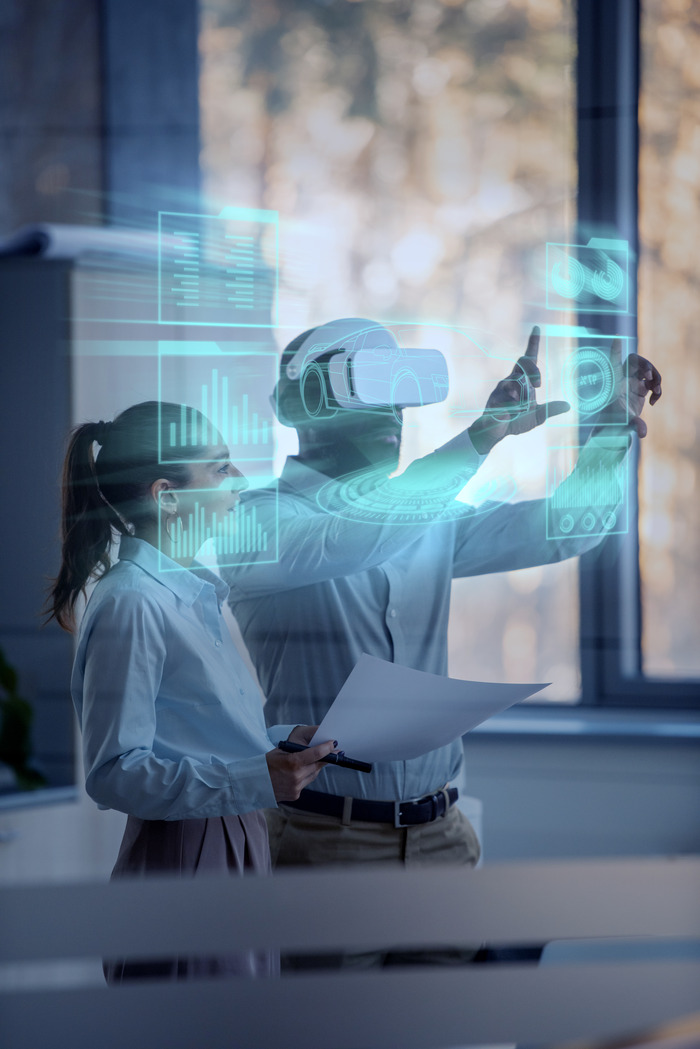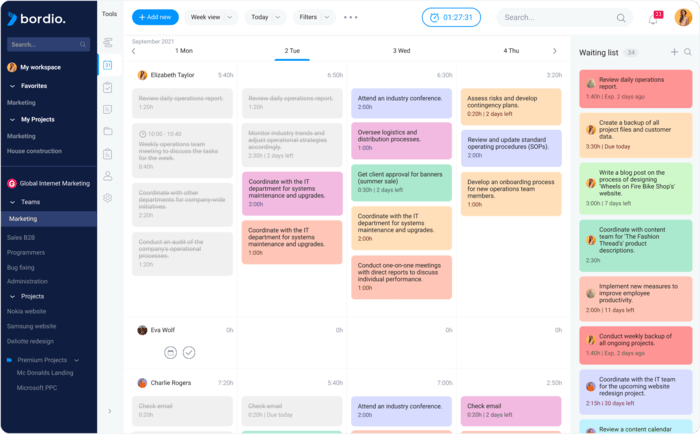Implementing AI in construction
- Automating and optimizing design work:
Artificial intelligence can analyze large amounts of data to create building designs, considering factors ranging from climatic conditions to potential environmental impact. This reduces the time and effort spent on pre-design.
- Predicting risks on the construction site:
AI-based systems can process data from sensors and cameras on the construction site, predicting potential risks or problematic issues related to worker safety or structural reliability of the site.
- Optimizing logistics and resource management:
AI can automate the material accounting and ordering process, monitoring material consumption in real time and optimizing deliveries to minimize delays and excess costs.
- “Smart” robots on the construction site:
Robots with artificial intelligence systems can perform tasks ranging from simple material handling to complex installation and assembly. These robots can work around the clock, increasing productivity.
- Analyzing structural reliability:
AI can analyze the structural reliability of a building at all stages of construction, predicting potential problems and offering solutions before they become critical.
- Integration with other technologies:
Artificial intelligence can collaborate with other technologies, such as VR and AR, to create interactive 3D models of a construction site or train workers in virtual reality before work begins.
- Big data processing and analysis:
Artificial intelligence can analyze vast amounts of data from various sources (e.g., weather data, traffic information, historical construction data in a region) to provide builders with valuable insights and recommendations.
Drones on the construction site
Let’s discuss using drones on job sites to get up-to-date aerial photos and video footage. This approach significantly speeds up the process of monitoring the progress of work. With their help, you can easily detect errors and delays in the early stages. In addition, such analysis can be used for design purposes. With the help of specialized cameras and software, drones can create detailed 3D models of objects and territory, which helps plan and design construction sites. Drones can save resources on on-site inspections, reducing the time and effort to undergo such procedures. It can also reduce the cost of equipment, such as cranes, for inspecting high-rise sites.
Regular drone footage can serve as a valuable document of construction progress. This is useful for the construction team and customers, who can monitor real-time progress. Drones can help monitor the environmental impact of construction, providing data for ecological reports and analysis. Visual data from drones can be easily integrated into presentations, essays, and meetings, improving communication between everyone involved in a construction project. Online project management tools can still be used to make the architecture team more organized during the creation process. Keeping track of work progress and goals in the team planner will be easier. Such a handy tool is generally good, so we recommend trying it out.
In addition to analysis, you can also use drones as a workforce to modernize the construction process. Where people used to risk their safety, such as inspecting tall structures or hard-to-reach areas, drones can now fly. This minimizes the risk of accidents related to heights or unstable systems. Drones can also monitor and analyze traffic and pedestrian movement around a construction site, preventing potential accidents and conflicts.
3D printing in construction
As we mentioned earlier, thanks to drones, it is now possible to create detailed 3D models of a construction site. These models provide a complete overview of the area and serve as the basis for subsequent innovative technologies in construction.
One such technology directly dependent on high-quality 3D modeling is 3D printing. Printing buildings and structures using 3D technology allows builders to erect complex architectural forms quickly while minimizing waste and reducing labor costs. With 3D printing, architects are given design freedom previously imagined, allowing for unique, environmentally friendly, and cost-effective buildings.
Another innovation in construction that is worth noting is intelligent building materials. They can adapt to their environment, respond to changes in temperature or humidity, and even self-heal after damage. For example, concrete can “heal” its cracks with the help of embedded microorganisms or glass that changes its transparency depending on the light level. These materials increase the lifespan of structures and make them safer and more energy efficient.
Digital automation and augmented reality in design
 Virtual reality (VR) and augmented reality (AR) have revolutionized the world of architecture and construction. Using VR, professionals can immerse themselves and their clients in a fully immersive space of the designed project before the foundation stone is even laid. This provides a unique opportunity to identify potential problems early on and determine the client’s needs, allowing them to “walk through” the building and evaluate it from different angles.
Virtual reality (VR) and augmented reality (AR) have revolutionized the world of architecture and construction. Using VR, professionals can immerse themselves and their clients in a fully immersive space of the designed project before the foundation stone is even laid. This provides a unique opportunity to identify potential problems early on and determine the client’s needs, allowing them to “walk through” the building and evaluate it from different angles.
On the other hand, augmented reality allows workers on the construction site to “overlay” the design onto the actual space. For example, a worker using specialized augmented reality glasses can see where utilities should be installed or how a particular part of the building will look after the work is completed. This reduces errors, speeds up construction processes, and improves the overall quality of the work performed.
Process automation also plays a crucial role in today’s construction industry. With project management software, robotic systems for routine tasks, and automated monitoring of construction processes, companies can save significant time and resources. Automation helps reduce human error, reduce errors, and speed up project delivery, ultimately leading to increased competitiveness in the marketplace.


